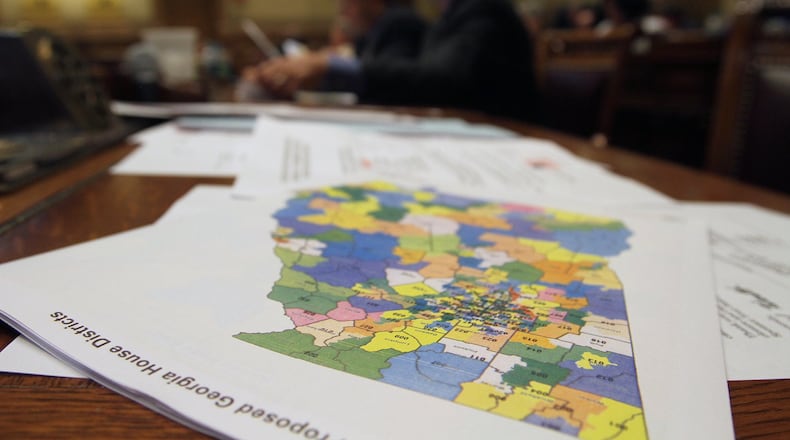Democratic state lawmakers on Thursday released their version of what they believe Georgia’s congressional districts should look like after legislators redraw them next month, splitting the state’s 14 seats in half — with seven leaning Democratic and seven leaning Republican.
The proposal from the House and Senate Democratic caucuses also shifts a congressional seat from northeast Georgia into metro Atlanta.
Since the Legislature is controlled by Republicans, it’s highly unlikely the Democrats’ proposals will have any influence on the process when lawmakers begin a special session Nov. 3.
Democrats say their proposed district lines more accurately reflect the near 50/50 split of voters in recent elections.
Republican Brian Kemp defeated Democrat Stacey Abrams 50.2%-48.3% in the 2018 governor’s race. Democrat Joe Biden last year won 49.5% of the state’s presidential vote to Republican Donald Trump’s 49.3%. Republicans currently hold eight of the state’s 14 congressional districts and will likely redraw the political lines in hopes of taking at least one more.
“As we crafted this proposed map, we wanted to ensure that it takes into account population trends within Georgia, reflects the will of Georgia voters at the ballot box and allows voters of color an equal opportunity to elect their candidates of choice,” said Senate Democratic Leader Gloria Butler of Stone Mountain.
The proposed map from the Democrats divvies up conservative areas in North Georgia among three districts. A new 10th Congressional District is then created on the west side of metro Atlanta with parts of Cobb, Douglas and Fulton counties.
Every 10 years, the Legislature is tasked with redrawing state House, Senate and congressional districts to align with population shifts determined by the U.S. census. Each congressional district must have about 765,000 residents, and many seats have to be adjusted because the state’s population continues to shift from rural areas to cities.
After the 2010 census, Republicans controlled 10 of the state’s 14 congressional seats. But Democrats in the past two campaign cycles flipped two seats. The Republican majority in the General Assembly is expected to try to win back at least one seat through redistricting by drawing more GOP areas into one of the districts.
Proposed maps released by Senate Republicans last month would create a ninth Republican-leaning district.
Keep Reading
The Latest
Featured





